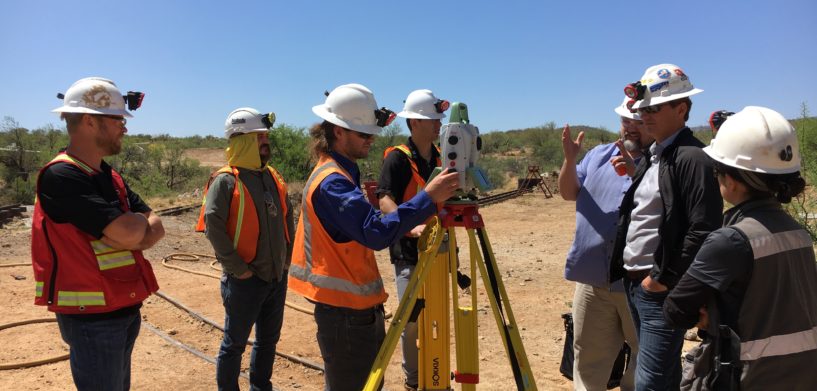Hexagon’s MS60 multistation integrates laser scanning, GNSS, and imaging into the tried-and-true platform of a total station. This powerful new instrument was recently used to scan the upper level of the University of Arizona’s San Xavier underground mine. The demonstration quickly revealed the value of integrating a laser scanner into a proven survey instrument. The MS60 survey traversed through the mine with each scan always correctly georeferenced. This eliminates the office point cloud registration process typically dreaded by operators. All images are also proper and can be taken at each setup.
David Rutledge, Director, Structural Monitoring at Hexagon’s Leica Geosystems division, said the MS60 is widely used in the construction industry as a formal surveying tool, but remains underutilised in the mining industry. He believes the trend towards underground mining will increase demand for the MS60.
Companies are increasingly looking to extend their life of mine by pushing deeper beneath the surface for deposits. Underground mining methods are trying to meet these demands. Those methods are encountering complexities that may be easy to overcome above ground and require domain expertise and often non-scalable customised solutions, below. According to Rutledge, the MS60 is roughly 70% total station, 30% laser scanner. “This turns out to be the perfect ratio for underground surveying and monitoring and it’s hard to lose with this device,” he said. “Our initial on-site demonstrations show this.”
In an industry where a single haul truck tyre can cost $100,000, the MS60 – which costs about half that amount – can quickly pay for itself through productivity gains. “The MS60 is one of the most powerful measurement devices in the world,” said Rutledge.











